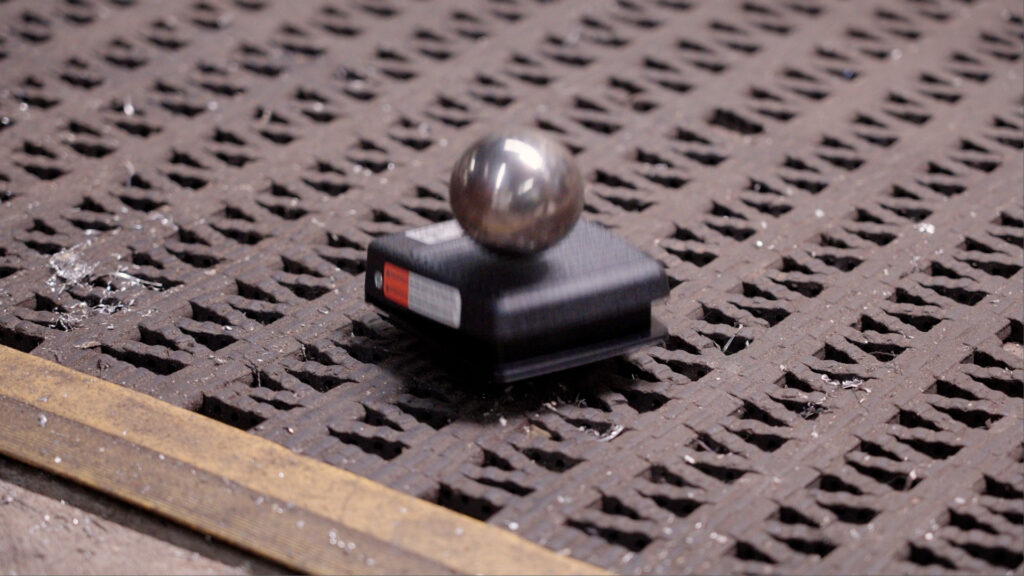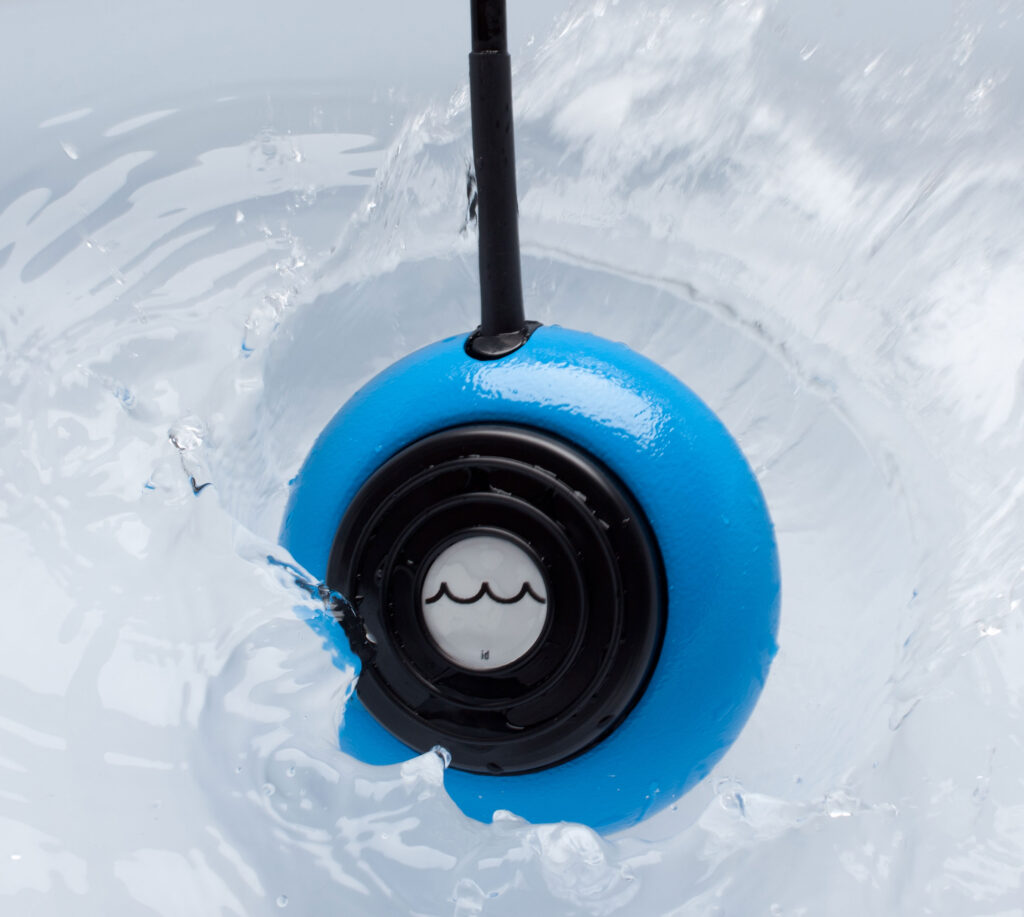What We Test In House
Not every test needs to happen in a third party lab. We handle quite a bit of durability and electrical validation right here, including:
- Drop testing
- Impact testing
- Water testing (non-wireless only)
- Force to activation measurements
- Life cycle testing (mechanical and powered)
- Crush testing and gurney rollover simulations
- Cable bend and pull testing
- Dielectric strength (hypot) testing
We have even developed specific in-house methods, like submersion testing in saline water, to help validate water protection. And we have built custom setups for real world use cases, like simulating a hospital gurney rolling over a cable. Life cycle testing and cable bend tests are handled in our innovation center, and each test uses purpose-built equipment such as force gauges, mechanical cycle actuators, or sealed tanks depending on the need.
Many of the internal procedures we follow are based on IEC 60601-1 requirements.
| Test | Standard / Clause Reference |
| Drop and Impact | IEC 60601-1, Clause 15.3.2 –15.3.3 |
| Water Ingress | IEC 60601-1, Clause 15.3.5 (with IP code reference to IEC 60529) |
| Activation Force | IEC 60601-1, Clause 9.4.2 |
| Life Cycle Durability | IEC 60601-1, Clause 4.9 |
| Crush/ Rollover | IEC 60601-1, Clause 15.3.4 |
| Cable Bend / Pull | IEC 60601-1, Clause 15.4.3 |
| Dielectric Strength (Hypot) | IEC 60601-1, Clause 8.8 |
While we are not certifying products in-house, our testing methods are built to be consistent with these requirements so that results are meaningful when it is time for external certification.
Again, these tests are not for certification. They are run to show that a product is capable of meeting the requirements our customers care about. By doing this upfront, we help customers avoid surprises and steep costs when it is time to go to a certified lab.
Drop Testing: What Happens When It Hits the Ground
Drop testing helps us simulate what happens when a switch takes a hit, whether it is dropped during setup, knocked off a cart, or bumped in transport.
That means testing from defined heights such as one meter, with precise drop angles including flat sides, corners, and edges, onto hard surfaces. Once dropped, we inspect for signs of damage and check whether the actuation point is still within specification.
Impact Testing: Can the Housing Take a Hit
Foot switches are not always treated gently. They get kicked, stepped on or struck by tools and carts. That is exactly what impact testing is designed to simulate.
For this test, we follow a standardized method. A steel ball 50 millimeters in diameter is dropped from a height of 1.3 meters through a PVC tube directly onto the pedal. This setup, also based on IEC 60601, let’s us consistently apply impact to the same location and with the same force.
A pass means there is no visible damage. A failure could include cracks in the housing or deformed internal components. This kind of test is especially useful when evaluating new materials or product lines that need to hold up in tough environments.


Water Testing: Corded and Wireless Foot Switches
If a pedal sits in a damp area or is exposed to cleaning fluid, you need to know it can keep working. We run water testing on both corded and wireless foot switches to make sure moisture will not compromise function. The only part not included in this testing is the wireless receiver, which is not waterproof.
Our in-house capabilities focus on submersion testing. For example, we place the foot switch under 250 millimeters of saline water for a full minute while it is activated fifty times. We also use a deep tank that holds switches underwater at 1.2 meters of depth for twenty-four hours before electrical testing.
We are not simulating splash, rain, or hose down conditions at this time. These are strictly submersion tests. After testing, the unit is opened and inspected for signs of liquid ingress around internal contacts or cavities. Dielectric strength testing is also performed to confirm that insulation has not been compromised. Fully sealed models such as Hercules or explosion proof designs are especially suited for this type of validation.
Wireless pedals follow the same water resistance testing as corded models. The receiver, however, is not waterproof and would not pass the same test. That difference is important when evaluating how the system as a whole will perform in wet environments.
In addition to water testing, we expose certain models to common hospital cleaning agents including CaviCide, Cidex, and Enzol, as well as everyday disinfectants like bleach, saline, soaps, and isopropyl alcohol. These checks help confirm that the housing can withstand regular cleaning without degrading or cracking.
What Gets Sent Out for Certification
When a switch needs to be certified, for example for medical use or to meet specific regulatory standards, it has to go through a third-party lab. We cannot certify a product ourselves.
That includes things like:
- EMI and RFI testing
- ESD testing (electrostatic discharge)
- Long term submersion or high pressure washdowns
- Final safety certifications for FDA submissions such as 510(k)
The lab we work with depends on what the customer needs. Some focus more on mechanical testing, others specialize in electrical or environmental requirements. For instance, ESD testing often requires calibrated equipment that is expensive to maintain. UL is another common partner, handling listing for our stock products so we can use the UL mark. Custom builds based on stock products can often leverage the certifications from the stock product.
Why We Do It This Way
In-house testing gives us and our customers a head start. If a product fails during our test, we can catch it early, before the tooling is complete or certification even starts. Maybe a spring fails during life cycle testing, or a cable leaks during water testing. In those cases, we revise the design, retest, and move forward with confidence.
It is all about minimizing surprises and cost. Certification is not cheap, and re-testing after failure can be even more expensive. By front loading quality checks here, we help make sure our products are ready for whatever comes next.
We also draw on decades of experience. Having built millions of switches for hospitals, labs, and industrial environments, we have seen how products can fail and we use that knowledge to strengthen new designs.
Call to Action
Need a foot switch that can take a hit, handle the elements, or stand up to a hospital environment? Reach out to our team to learn how we validate our designs, and how we make sure yours passes the tests that matter.
Want to dig deeper into how we think about durability and protection? Check out our blog on “Ingress Protection” to see how IP ratings work and what level of sealing might make sense for your application.
Curious when testing overlaps with customization? You might also like our post on “What Constitutes a Special Switch” to see how even small changes can impact performance and testing needs.
Date Uploaded 09/24/25
In collaboration with Dave Drouin (Applications Engineer)
Custom Footswitches
Linemaster’s custom footswitches are designed to meet specific user requirements, offering a range of features such as various pedal configurations, wired and wireless options, and customizable LED indicators. These custom footswitches provide reliable, durable solutions tailored to enhance functionality in diverse applications.


